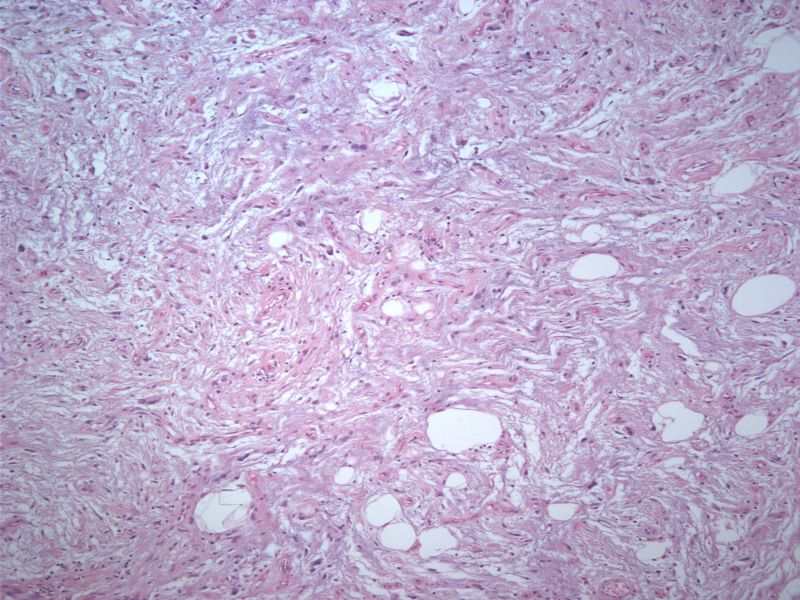System: Soft Tissue: Lipomatous: Neoplastic: Well-differentiated liposarcoma, sclerosing variant

System: Soft Tissue: Lipomatous: Neoplastic: Well-differentiated liposarcoma, sclerosing variant



Case 1: The sclerosing variant is composed of collagenous tissue with a fibrillary texture. Lipoblasts are very difficult to identify in this subtype, but mature adipocytes can be seen. This tumor arose from the spermatic cord.
Bizarre stromal cells are scattered in the fibrous tissue.
A closer look at the bizarre stromal cells.
Other areas have mature appearing adipocytes.
Liposarcomas are divided into three broad categories: (1) well-differentiated (2) myxoid and (3) pleomorphic. The well-differentiated category is further subdivided into four subtypes: (1) adipocytic (lipoma-like), sclerosing, inflammatory and spindle cell type.
The most common subtype is the adipocytic lipoma-like variant. The sclerosing variant is most common in the retroperitoneum and paratesticular region.
Well-differentiated liposarcomas (a.k.a. atypical lipomatous tumors) are characterized by the presence of ring chromosomes derived from chromosome 12, which contain amplified copies of MDM2, CDK4 and HMGA. This results in overexpression of these genes, thus, staining for MDM2 and CDK4 may be helpful in identifying well-differentiated liposarcomas and dedifferentiated liposarcomas (Fletcher).
Fletcher CDM, ed. Diagnostic Histopathology of Tumors. 3rd Ed. Philadelphia, PA: Elsevier; 2007: 1535.